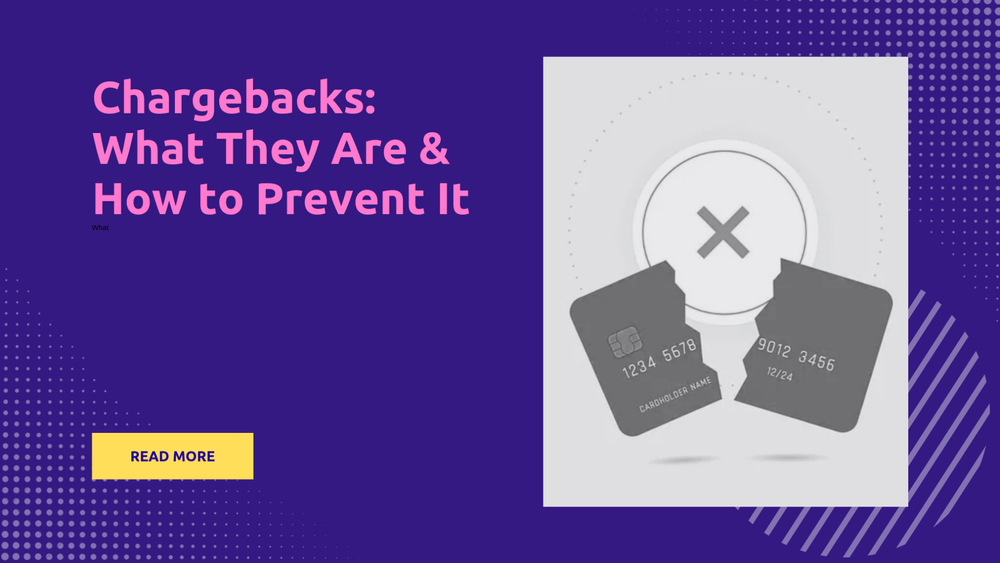Optimize Sales with Shopify Font Strategies!
By Abhishek Sebin on

Before going through the shopify font optimization guide, you should know that, research indicates that fonts have the power to affect moods and emotions. With specific typography styles capable of evoking feelings such as trust, elegance, efficiency, or fun, depending on their application.
The fonts used on a Shopify store not only establish a visual hierarchy and guide the visitor’s gaze but also convey the brand’s personality within moments of arrival.
Therefore, the process of selecting and optimizing fonts is crucial for engaging visitors and encouraging them towards making a purchase. Fonts that are easy to read enhance the ability of customers to swiftly find information and products, thereby improving the shopping experience. Conversely, fonts that are difficult to read or don’t align with the brand’s identity can drastically decrease sales.
Shopify themes like Debut and Brooklyn provide a variety of customization options, allowing businesses the flexibility to identify and apply the perfect fonts that resonate with their brand and products. When designing or updating an online storefront, it’s vital to recognize the significant influence of typography.
This shopify font optimization guide aims to delve into the psychology of font choices, outline best practices for selecting fonts that optimize conversions on Shopify, and illustrate how to integrate custom fonts into a website effortlessly.
Understanding Shopify Fonts
Shopify provides store owners with significant flexibility and control over font customization, setting itself apart from other ecommerce platforms. Store owners have the option to either use the default fonts available within Shopify’s themes or to incorporate custom fonts using the theme editor.
The platform’s default font options consist of widely recognized web-safe fonts such as Arial, Times New Roman, and Verdana. Each Shopify theme features its own set of pre-selected fonts for various elements like headings and body text.
The introduction of custom fonts enables store owners to explore endless opportunities for establishing a distinct brand identity and store aesthetics. The choice of typography is pivotal in forming initial impressions and driving user engagement.
Selecting fonts that embody the brand’s personality is crucial for maintaining a consistent look and feel throughout the Shopify site. Whether opting for elegant serif fonts for headers or clean sans-serif fonts for body content, every font choice sends a specific message.
By experimenting with and refining the use of fonts on Shopify, ecommerce businesses can create a fully immersive, brand-aligned experience that appeals to their target audience and enhances conversion rates.
The Psychology of Fonts
Font choice significantly influences customer perception and behavior, with research indicating that various fonts can elicit distinct emotions and associations.
For instance, serif fonts, such as Times New Roman, are perceived as more traditional and authoritative, whereas sans-serif fonts are associated with modernity and innovation.
Marketing psychology experts assert that careful font selection is crucial, as appropriate typography can embody a brand’s identity and values. An elegant script font, for example, might enhance the image of a luxury, high-end brand, while a bold, striking sans-serif font could reflect the dynamism of an innovative startup.
Furthermore, the stylistic attributes of a font affect its readability and legibility. Fonts designed with large x-heights, open counters, and sufficient line spacing are easier to read and more accessible. In contrast, dense, highly stylized fonts may serve well for headlines but can hinder comprehension in body text.
In essence, the psychology behind font selection is intricate, yet a comprehensive understanding of its nuances can aid ecommerce brands in choosing typography that appeals to their ideal customer base. Experimenting with various fonts and soliciting feedback are essential strategies for identifying fonts that align with desired branding objectives and evoke the intended emotional reactions.
Choosing Conversion-Friendly Fonts
When selecting fonts for a Shopify store, the primary aim should be to drive conversions. The right choice of font can greatly enhance the user experience, making it more likely for visitors to engage, trust the brand, and complete purchases.
Consider these essential criteria for choosing fonts that are optimized for conversions for an online store:
Legibility: This refers to the ease with which users can distinguish individual letters and read extended text. E-commerce sites benefit from highly legible fonts, enabling customers to effortlessly read product descriptions, policies, and other vital information. Sans serif fonts such as Arial, Verdana, and Helvetica are known for their excellent readability on both desktop and mobile devices.
Readability: Readability is about how comfortably the text can be read over longer periods. For product pages, blogs, and other long-form content, fonts that offer superb readability, like Medium or Garamond, should be used while avoiding overly decorative script and display fonts.
Brand Alignment: Selecting one or two fonts that resonate with the brand’s identity and voice is crucial. Modern, minimalist brands may lean towards sans serif fonts like Futura, whereas more playful, creative brands might find a rounded font like Nunito more suitable for ensuring the brand’s visual consistency.
Trust and Credibility: Certain fonts, such as Baskerville, can project sophistication and expertise, whereas others like Comic Sans may suggest a more casual tone. It’s important to choose fonts that embody the tone one wishes to convey.
Accessibility: The primary font should be accessible at both large and small sizes, favoring simple, sans serif fonts for their legibility, which is especially important for visually impaired users.
Performance: It’s advisable to steer clear of overly elaborate or ornamental fonts that could slow down page load times, sticking instead to fonts that are quick to render on the web.
Some excellent font choices that meet these criteria include:
- Open Sans: A clean, highly legible sans serif font suitable for both headings and body text.
- Lato: A modern and versatile sans serif font known for its great readability.
- Poppins: Offers a friendly yet professional roundness.
- Rubik: A sans serif font with a mechanical feel, ideal for tech and fashion brands.
- Merriweather: An elegant serif font with excellent readability for extended text.
Experimenting with these conversion-optimized fonts and analyzing their impact on shopper behavior and sales is recommended. Adjustments can be made as needed to find the perfect fit.
Adding Custom Fonts to Shopify
In this shopify font optimization guide, we’re also going to talking about adding custom fonts that significantly enhances the brand identity of Shopify stores. By following a few simple steps, it is possible to implement new fonts that are in harmony with the store’s visual branding.
It’s crucial to adhere to best practices when adding custom fonts to guarantee a seamless user experience. Below is a detailed step-by-step guide:
1. Find and Purchase Commercial Licenses for Your Chosen Fonts
- It’s essential to only utilize fonts that are licensed for commercial use on websites, as numerous free fonts are restricted to personal use.
- Reviewing the font creator’s license or terms of use is advisable. Websites such as Font Squirrel provide fonts with commercial licenses.
- Opting for premium font families from respected foundries is recommended for a wider selection of options.
2. Upload Your Font Files to Shopify
- One should navigate to the Shopify admin by selecting Online Store > Themes.
- Next, one can click Add file and upload their font files, which are typically in .woff or .ttf formats.
- It is important to make sure all variations, such as bold, italic, etc., are uploaded.
3. Enqueue Your Fonts in the Theme Code
- The theme’s
theme.liquidfile code should be edited to include fonts. - Utilizing
@font-faceis essential for linking each font file and its variations. - Correct CSS syntax must be adhered to in order to prevent errors.
4. Implement Your Fonts for Specific Elements
- Assign fonts to elements such as headers and buttons in
theme.liquidand section CSS files. - Utilize selectors like
.heading { font-family: "Font Name"; }. - Verify font rendering on mobile devices and adjust CSS accordingly.
By adhering to these best practices, one can guarantee quick loading and correct display of custom fonts on all devices. Testing changes prior to going live is crucial. Although optimizing fonts on Shopify requires trial and error, it is beneficial.
Optimizing Fonts for Ecommerce
When selecting fonts for a Shopify store, it’s essential to ensure they render well across various devices and browsers. Fonts that look appealing on a desktop might not translate as well on mobile screens due to differences between operating systems like Windows and Mac OS.
Here are recommendations for optimizing fonts for compatibility across devices and browsers:
- Conduct tests on the primary fonts using different devices such as desktops, mobiles, and tablets to assess their readability. Zooming in and out is crucial to check legibility.
- Prioritize font formats like WOFF2, which provide better compression and faster loading times. Large font files should be avoided.
- Keep the selection of fonts to a minimum, preferably between one to three, as too many fonts can lead to conflicts across different platforms.
- Incorporate fallback fonts in CSS coding to ensure that devices have a default option if custom fonts do not load properly.
- Apply font-smoothing techniques, such as subpixel rendering, to enhance the sharpness of text on screens.
- Ensure the selected web fonts are compatible with various browsers, avoiding those with known issues.
Moreover, it’s vital to understand how font selections influence user experience and potentially conversions:
- Utilize A/B testing or heat mapping tools to observe user interactions with specific fonts.
- Test different fonts for primary content and headings to see if there are any significant effects.
- Experiment with various font sizes and line heights to find the best option for readability.
- Monitor analytics to determine if changes in font affect bounce rates or the addition of items to shopping carts.
Regularly analyzing user behavior can offer insights into optimizing fonts for better conversions. Minor adjustments in size, color, and style could lead to significant improvements in user experience over time.
Fonts and Copyright
Understanding licensing and copyright is crucial when selecting fonts for a Shopify store. Using fonts without proper licensing may result in legal complications.
The default fonts available in Shopify’s theme editor are already licensed for commercial use. However, for custom fonts sourced externally, verifying the license is essential. Many fonts available for free online are intended for personal use only and are not legally permissible for commercial purposes.
To prevent copyright infringement, it is advised to acquire fonts from reputable foundries offering commercial licenses. Adobe Fonts, FontSpace, MyFonts, and Google Fonts are some of the recommended sources with a wide range of commercially licensed fonts.
When selecting commercial fonts, it’s important to choose those with licensing options suitable for web use or for an unlimited number of users. The license should detail the allowed domains, traffic volume, or number of sites the font can be used on. Licenses limited to a single domain might not suffice for an average e-commerce site.
Key points to be cautious of include avoiding fonts labeled as “free for personal use,” steering clear of “trial” fonts not meant for permanent use, and thoroughly reading the End User License Agreement (EULA) to understand the terms of use fully.
Securing the proper commercial license ensures the legal use of custom fonts on a Shopify store. Selecting the right fonts not only complies with legal standards but also contributes to the brand’s identity is important.
Case Studies: Successful Shopify Stores with Optimized Fonts
Hans Woodgoods Co.
The handcrafted wood products company Hans Woodgoods faced challenges with low conversion rates on their Shopify storefront. An analysis conducted by the design team identified readability issues, stemming from the use of thin sans-serif fonts for both headlines and body text as a contributing factor. A strategic shift towards a bold serif font for headlines and a more legible sans-serif font for body text resulted in a 14% increase in conversions over a period of six months.
The focus was on selecting fonts that emulate the natural and rustic essence of the products offered. The introduction of new serif headings added a touch of craftsmanship, aligning closely with the brand’s identity. This enhancement in readability has notably improved the engagement level of product descriptions, as noted by the lead designer.
Blue Swimwear
This online swimwear boutique opted for elegant, looping script headlines initially, which, although visually appealing, proved challenging to read. A strategic shift to a more legible and approachable script for headlines resulted in a notable 21% increase in revenue for the boutique.
“Script fonts can be stylish but must maintain a balance between aesthetic appeal and readability. After testing three different script fonts, it was determined that Coronette offered the perfect blend of elegance and friendliness, which resonated well with the brand’s mainly female audience,” shared the co-owner of the boutique.
Craft Coffee Co.
Craft Coffee Co. specializes in selling specialty coffee beans and equipment through their online presence. The company, while ensuring the use of professional photography to enhance the visual appeal of their Shopify store, initially struggled due to the generic appearance created by using mainstream system fonts. The introduction of a combination of display fonts along with serif body text significantly improved the aesthetics of their online store, resulting in an impressive 11% increase in conversions.
The transition to distinctive fonts transformed the online store, imbuing it with a personality that aligns closely with the brand’s commitment to artisan coffee. The chosen display fonts convey a sense of craftsmanship, effectively communicating the brand’s passion for quality, leading to significantly better conversion rates compared to the previous default font selection.
Conclusion
Choosing the right font is a critical design decision that significantly affects conversions on a Shopify store. Typography plays a crucial role in shaping user experience in subtle yet significant ways. When fonts that match the brand identity are used and legibility is prioritized across various devices, it leads to higher engagement rates and increased sales.
The essential points from the shopify font optimization guide on optimization of fonts include:
- Fonts convey personality and set the tone for the store. It’s important to select fonts that reflect brand values and appeal to the target audience.
- Readability and scannability should be a priority. It’s advisable to avoid using fancy display fonts for body text and instead opt for clean, simple fonts that offer clear character variation.
- Ensuring font performance on mobile is crucial. It’s important to choose web fonts that are optimized for all devices and check that they render well across different browsers.
- Font licensing should not be overlooked. Using fonts from reputable foundries and confirming commercial licenses for any custom fonts is recommended.
- Experimenting with different fonts through A/B testing can help identify the most effective options for the store. The impact of these changes on conversions should be measured.
- Fine-tuning font usage for various elements such as navigation, headers, product information, buttons, and more is beneficial.
- Adhering to font best practices, such as limiting the number of fonts used, strategic use of font weights, and setting ideal line heights, is advisable.
Optimizing Shopify fonts involves a blend of strategy and creativity. By applying design principles and conducting data-driven testing, the full potential of typography in enhancing the online store can be unlocked. This guide serves as a starting point for continually refining font choices based on performance. Thoughtful implementation of the right fonts throughout the Shopify theme can lead to improved user experience and measurable increases in sales and revenue.
FAQs
What are the basics I need to know about fonts on Shopify?
Understanding fonts on Shopify involves several key points:
- Shopify provides a variety of default fonts, including Helvetica Neue, Lato, and Roboto, to meet basic requirements.
- Additional custom fonts can be incorporated through the theme editor by either uploading font files directly or linking with a font service such as Google Fonts, offering a wide range of options.
- It’s advisable to limit the use of different fonts to a maximum of three to avoid a cluttered appearance.
- The strategic use of fonts can significantly contribute to brand identity, with choices between serif and sans-serif and other stylistic considerations being crucial.
- Font compatibility across different devices, particularly mobile, is essential. Testing various sizes can help in optimizing readability.
- The use of script and display fonts should be kept to a minimum, with a preference for simple, legible fonts for the majority of content.
- Adherence to font licensing agreements is necessary, as commercial usage may necessitate a paid license, though some fonts like Open Sans are available under open licenses.
How do I know which fonts work best for conversions?
Certain fonts possess qualities that lead them to be more effective in driving conversions:
- Fonts should feature clear, straightforward letterforms without excessive stylistic flairs. Sans-serif fonts are usually a good choice in this regard.
- They should have moderate proportions and spacing between letters to ensure high readability. Fonts with unusual shapes should be avoided.
- It’s important that the font is chosen based on its intended purpose, such as opting for a clean sans-serif for headlines and a serif for text blocks.
- The chosen font must also resonate with the brand’s style and tone, ensuring consistency with the brand’s image and voice.
- Employ A/B testing with different fonts and monitor metrics like the addition to cart rates to identify which font yields the best performance.
- Observing the fonts utilized by competitors or leading brands within the same industry can offer insights into styles that are effective in garnering conversions.
What’s the best way to add custom fonts to Shopify?
When integrating custom fonts into Shopify, it is advisable to:
- Directly upload font files through the theme editor when using licensed fonts, as this offers the greatest degree of control.
- Opt for reputable font services such as Google Fonts, Adobe Fonts, or Fonts.com when seeking free or subscription-based fonts. These can be linked through the theme editor.
- Establish fallback fonts in the event that the custom fonts do not load properly. These should be specified in the theme CSS.
- Convert fonts into various formats (woff2, woff, etc.) to ensure compatibility across different platforms. Utilizing a font converter tool is recommended for this purpose.
- Adhere to best practices, including minimizing file sizes and employing font loading techniques, to prevent the site from becoming sluggish.
- Conduct site previews on a variety of devices to verify that the fonts load and display correctly across all platforms.
What are some great fonts I can use for bold headings?
The selection of the right font for bold headings can greatly influence the visual impact and appeal of content. Here are some notable options:
- Strong, simple sans-serifs, such as Futura, Avant Garde, Avenir, or Aktiv Grotesk, stand out for their clean, eye-catching style that is ideal for headlines.
- Slab serifs like Rockwell, Archer, or Roboto Slab are characterized by their blocky serifs, which make them very distinctive.
- Display scripts, including Oleo Script or Parisienne, offer a handwritten, playful effect, though they should be used in moderation.
- Dramatic serif fonts, such as Didot, Bodoni, or Garamond (with increased letter spacing), are known for imparting a luxurious, high-end feel.
- Industrial fonts like Brandon Grotesque, Clan, or Industry Inc. deliver a bold, urban vibe.
- Monospaced fonts such as PT Mono or Space Mono evoke a retro, techy look.
For headings, it’s generally advisable to choose display or sans-serif fonts that provide strong visual impact and convey personality, thereby ensuring the content grabs attention.
Markdown 21458 bytes 3290 words 242 lines Ln 176, Col 78
HTML




